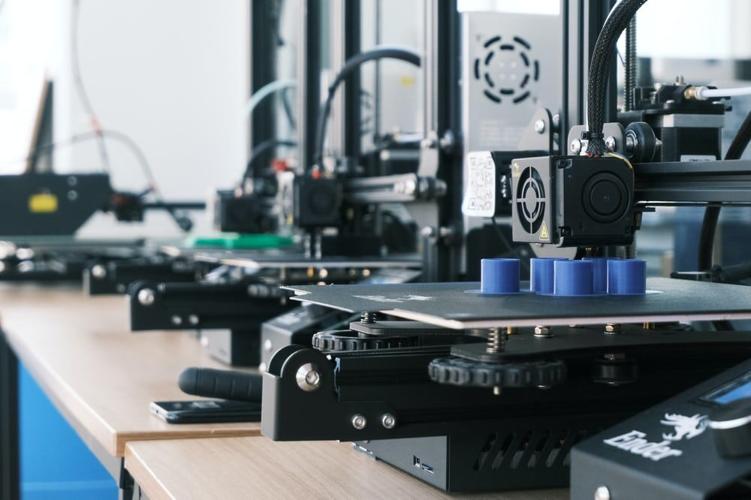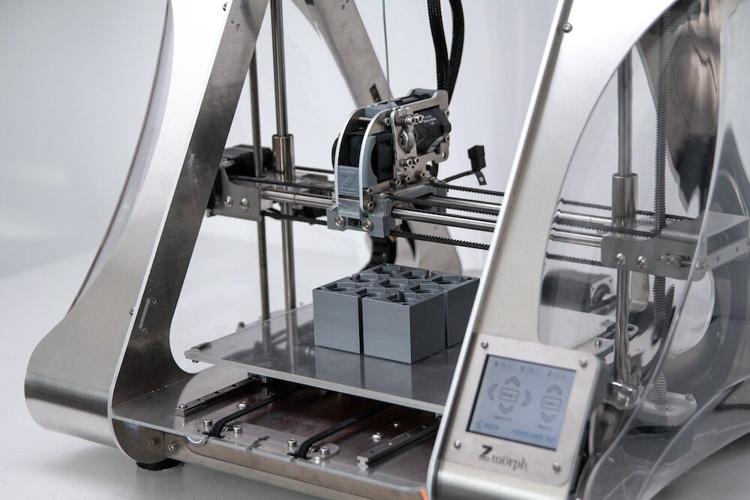
3D printing is a relatively new technology that is being developed constantly over the last decade. It opened new possibilities in various industries to design and build products that seemed hard to manufacture before. 3D printing is still not widely used in the business world, but with the latest technological advancements, the future seems bright for this branch of technology. Most people think that it only uses plastic to manufacture products. However, various materials have been introduced to this technology in the last few years. One of the most promising materials to be used is metal, as it opens new possibilities to build hard to manufacture metal parts through traditional ways. This guide will show you how to 3D print metal.
Metal 3D Printing Technologies
Various metal 3D printing technologies are available on the market. While they vary in different aspects, they share one fundamental characteristic: they craft metal parts layer by layer. The most commonly used technologies for metal 3D printing include:
- Powder Bed Fusion
- Direct Energy Deposition
- Metal Binder Jetting
- Ultrasonic Sheet Lamination
The most well-established of these technologies is the Powder Bed Fusion. This technology uses either a laser or an electron beam as an energy source that fuses layers of powdered metal which are distributed evenly on the build platform of the machine. Two 3D printing processes are used in the Powder Bed Fusion technology, Selective Laser Melting (SLM)/Direct Metal Laser Sintering (DMLS) or Electron Beam Melting (EBM). SLM and DMLS use a laser beam to fuse metal particles to create a part in an enclosed chamber filled with inert gas. On the other hand, EBM uses a high-powered electron beam to melt the powdered metal in a vacuum environment to prevent contamination and oxidation of the powder. Direct Energy Deposition (DED) uses a laser beam through a nozzle to create metal 3D prints, but they are highly accurate and smaller than Powder Bed Fusion’s products.
Metal 3D printing industries are strongly advised to have an advanced and modern vacuum and compressed air system in place to collect hazardous dusts safely and efficiently during production. If you want to start a Metal 3D printing business, check out Busch Vacuum. They can explain how industrial vacuum works with 3D printing and provide all of your vacuum system needs.
Benefits and Challenge
Benefits
One of the main benefits of metal 3D printing is that it opens new opportunities for manufacturing as it can produce complex geometries. 3D printing is more cost-efficient than the traditional ways when it comes to creating intricate designs. Moreover, it removes the cost for tooling and molds, which can be much higher than the cost of 3d metal printing as manufacturers will eliminate setup costs. Traditional methods leave a massive waste of material that can go as high as 95%. 3D printing wastes much less material as the material is sintered or melted where necessary, and some non-sintered powdered metal can be reused in future products. Finally, 3D printing makes low-volume production more affordable as they are costly in traditional ways.
Challenges
Since metal 3D printing is a growing technology, 3D printers are still expensive and limited. At the same time, the materials used are now widely available and cost higher than the traditional materials. However, in the future, the demand will make the prices go lower. Lack of expertise in this technology can pose a considerable challenge for any business planning on using it. One of the challenges facing metal 3D printing is ensuring that the quality of each product will stay the same. Too many variables through 3D printing can affect the quality of the part, and controlling these variables will take some time to refine.
Materials Used
Though the number of materials used in metal 3D printing is still limited, it is expanding as time goes on. Some processes such as DED can use metals intended for traditional methods if they are in a wire form. Aluminum is the most commonly used powdered metal as it is lightweight, has easy post-processing, and has high corrosion resistance. It is primarily used in the automotive and aerospace industries. Titanium is another powdered metal popular in motorsport, aviation, and medical applications, as it has outstanding biocompatibility, strength, toughness, and high density. Oil & gas, food processing, medical, and aerospace industries use stainless steel in various 3D printing products as it has good weldability, toughness, and high corrosion resistance. Other materials used in metal 3D printing include cobalt-chromium alloy, nickel alloys, and copper-based alloys.

Metal 3D printing is evolving rapidly, and though some may find it expensive, it saves money and reduces waste in the long run. New technologies are being developed to improve this printing technology, and its costs are getting lower by the day. It opens new possibilities to produce parts that were deemed impossible to do in the past. Large format laser printers are perfect for producing high-quality, oversized documents such as architectural blueprints, marketing banners, and engineering schematics.



(0) comments
We welcome your comments
Log In
Post a comment as Guest
Keep it Clean. Please avoid obscene, vulgar, lewd, racist or sexually-oriented language.
PLEASE TURN OFF YOUR CAPS LOCK.
Don't Threaten. Threats of harming another person will not be tolerated.
Be Truthful. Don't knowingly lie about anyone or anything.
Be Nice. No racism, sexism or any sort of -ism that is degrading to another person.
Be Proactive. Use the 'Report' link on each comment to let us know of abusive posts.
Share with Us. We'd love to hear eyewitness accounts, the history behind an article.